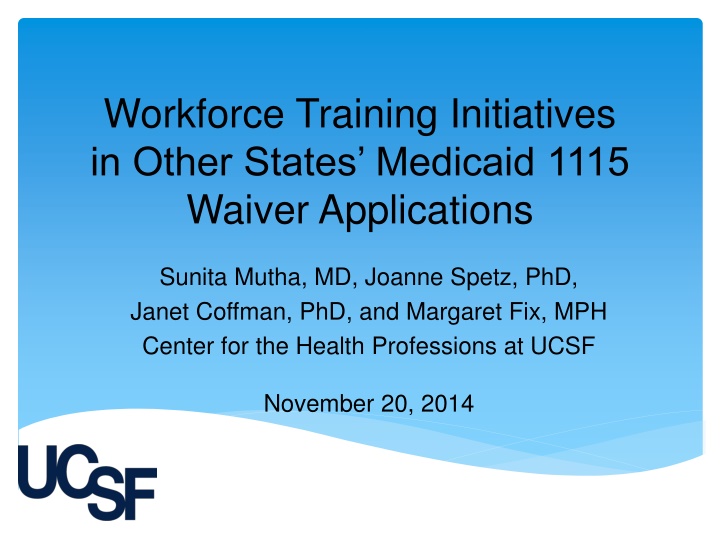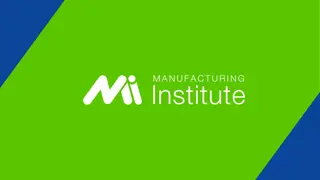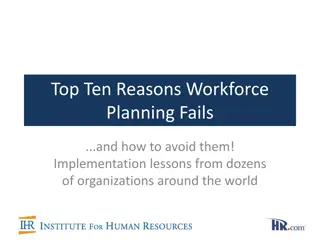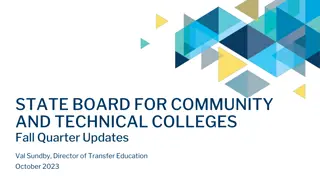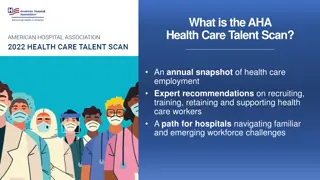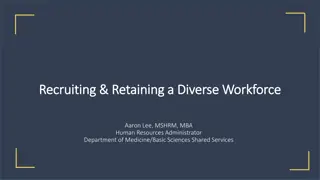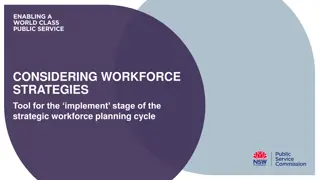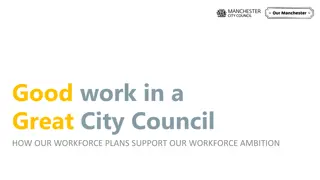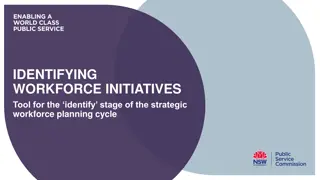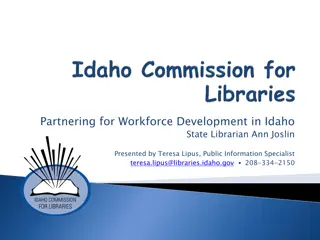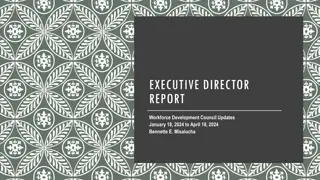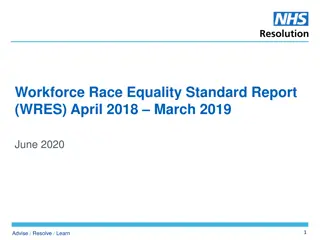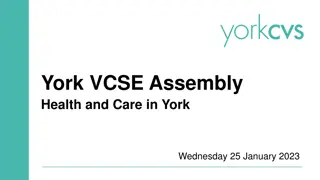Workforce Training Initiatives in Healthcare: State Approaches Overview
This document provides insights into workforce training initiatives in healthcare across various states, focusing on Medicaid 1115 waiver applications. It covers sources of information, states with approved or pending initiatives, major types of initiatives, and an overview of waiver strategies by state, highlighting efforts to train more health professionals, address care gaps, and incentivize service to underserved populations.
Download Presentation

Please find below an Image/Link to download the presentation.
The content on the website is provided AS IS for your information and personal use only. It may not be sold, licensed, or shared on other websites without obtaining consent from the author.If you encounter any issues during the download, it is possible that the publisher has removed the file from their server.
You are allowed to download the files provided on this website for personal or commercial use, subject to the condition that they are used lawfully. All files are the property of their respective owners.
The content on the website is provided AS IS for your information and personal use only. It may not be sold, licensed, or shared on other websites without obtaining consent from the author.
E N D
Presentation Transcript
Workforce Training Initiatives in Other States Medicaid 1115 Waiver Applications Sunita Mutha, MD, Joanne Spetz, PhD, Janet Coffman, PhD, and Margaret Fix, MPH Center for the Health Professions at UCSF November 20, 2014
Sources of Information Medicaid.gov website Pending applications Demonstration approval letters State Medicaid agencies websites Websites for other state programs funded through Medicaid 1115 waivers 2
States with Workforce Initiatives Approved or Pending in 1115 Waiver Applications Illinois Minnesota New Hampshire New Jersey New York Oregon 3
Three Major Types of Initiatives Train more health professionals Innovative ways to address whole person care Create incentives for health professionals to serve Medicaid beneficiaries and other underserved populations 4
Overview of Waiver Strategies by State Strategy IL MN NH NJ NY OR Train more Increase retention Address practice limitations Add greater efficiency Innovative ways to address whole person care Create incentives 5
Train More Health Professionals Illinois $10 million/yr. for a pilot program; similar to the Teaching Health Center GME program $26 million/yr. to medical & dental residency programs in specialties in great demand in medically underserved areas At least $50 million/yr. for training programs to increase access to care in underserved areas Multiple occupations Multiple educational levels 6
Train More Health Professionals 2 Minnesota Distribution of at least $21.7 million through the Medical Education and Research Costs Trust Fund Institutions providing medical or dental education are eligible Some funds targeted to improve access to care for underserved populations 7
Train More Health Professionals 3 New Jersey Hospitals enrolled as a New Jersey Medicaid provider, and previously receiving a supplemental payment under the Medicaid State plan in 2012 can receive two types of payments: GME Transition Payments Hospital Relief Subsidy Fund (later replaced with DSRIP program) 8
Train More Health Professionals 4 Oregon Up to $178 million for health workforce training programs operated by public colleges and universities Through community colleges: Establish a standardized CHW curriculum Train 300 additional CHW by December 2015 9
Increase Retention Oregon $2 million/yr. for a loan repayment program for health professionals who commit to serving Medicaid populations in rural and underserved areas Eligible professions include: Dentists and dental hygienists Mental health professionals Nurse practitioners Physician assistants Primary care physicians 10
Increase Retention 2 New York $250 million over 5 years to recruit and retain health professionals in underserved areas Doctors Across New York (DANY): loan repayment and incentives to establish or join existing practices Primary Care Service Corp: loan repayment for: Advanced practice nurses Dentists and dental hygienists Mental health professionals Physician assistants 11
Increase Retention 3 Illinois $10 million/yr. for loan repayment for health professionals who commit to serving Medicaid enrollees in underserved areas Establish a "bonus payment pool" to provide funds to Critical Access Hospitals and other safety net hospitals to create loan repayment programs 12
Address Practice Limitations New York $250 million over 5 years to train: CHW and home care workers as care coordinators Personal care assistants as home health aides CNAs as medical assistants LPNs as health coaches RNs as certified diabetes educators Lab technicians as laboratory technologists Transitional case managers as health home case managers 13
Greater Efficiency New York Example: Training and retraining for case management staff in health homes aimed at: Integrating management of medical and behavioral health needs Reducing communication challenges Enhancing cultural competence Increasing use of successful outreach, engagement, and care management strategies Promoting team-based multi-disciplinary care 14
Address Whole Person Care New Hampshire $5 million in grants for workforce development aimed at substance use disorder and other behavioral health conditions Possible topics include: Crisis intervention Crisis stabilization Substance misuse and abuse Alcohol abuse Prescription drug abuse 15
Address Whole Person Care 2 New York Hospital-Medical Home (H-MH) Prepare primary care residents to deliver team-based, patient-centered, continuous care, with a focus on care transitions and population health Training done in hospital outpatient departments and other ambulatory care settings 119 primary care residency programs; includes 1 in 3 physicians-in-training in NY 16
